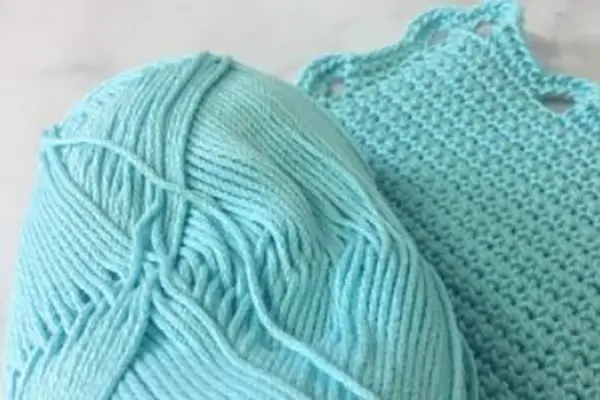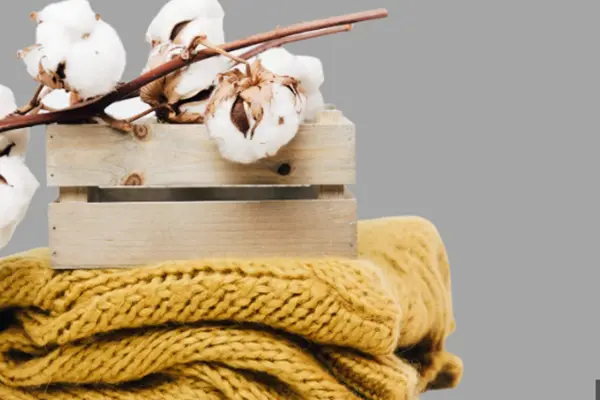Have you ever held two skeins of cotton yarn and wondered why one has a beautiful, silky sheen while the other is soft and matte? Or why one garment holds its color and shape wash after wash, while another fades and stretches? The secret often lies in a process called mercerization. As a manufacturer in the textile industry for many years, I’m Allen, and I’ve seen firsthand how choosing the right type of cotton yarn can make or break a project. For business owners and procurement officers like Mark Thompson in the USA, understanding these differences isn’t just about aesthetics; it’s about product quality, durability, and ultimately, customer satisfaction. This article will unravel the distinctions between mercerized and unmercerized cotton, helping you make an informed decision for your manufacturing, crafting, or resale needs.
What Exactly is Mercerised Cotton and Where Did it Come From?
Mercerised cotton is not a different type of cotton plant; rather, it’s a special type of cotton yarn that has undergone a transformative chemical treatment. This process is named after its inventor, the English chemist John Mercer, who discovered the process in the 1840s. Mercer was experimenting with cotton fibers and noticed that when he treated them with a caustic soda solution, their properties changed dramatically. The cotton fibers swelled, became stronger, and, most notably, gained a much higher affinity for dye.
Initially, John Mercer’s discovery didn’t produce the signature luster we associate with mercerized cotton today. The sheen was a later refinement by Horace Lowe in 1890, who figured out that applying tension to the cotton yarn during the caustic soda treatment was the key. This tension prevents the yarn from shrinking and aligns the fibers, creating a smooth, light-reflecting surface. So, when we talk about modern mercerized cotton yarn, we are really talking about a process that combines Mercer’s chemical discovery with Lowe’s mechanical innovation to enhance cotton in several key ways.
This treatment elevates a simple cotton yarn into something more luxurious and durable. The process fundamentally alters the chemical structure of the cellulose in the cotton, changing the shape of the individual fibre from a flattened, kidney-bean shape to a round, smooth cylinder. This structural change is responsible for all the enhanced properties that make mercerised cotton a premium material for high-quality garments and textiles.
How is the Mercerisation Process Performed on Cotton Yarn?
The mercerisation process, at its core, involves treating cotton with a highly concentrated solution of caustic soda (sodium hydroxide) while it is held under tension. The steps are precise and crucial for achieving the desired results. First, high-quality cotton yarn is selected. The type of cotton can influence the final outcome, with long-staple cottons like Egyptian or Pima often yielding the best results. The yarn is then submerged in a bath of cold caustic soda solution.
This chemical bath causes the cotton fibers to swell rapidly. This is the critical moment where the fibre structure changes. Without tension, the cotton yarn would simply shrink and become denser. However, by keeping the yarn stretched during this swelling phase, the fibers are forced to align in a more orderly, parallel fashion. This alignment is what creates the smooth surface that reflects light, giving mercerized cotton its signature lustre. This is a delicate balance; the right tension is key to an even and beautiful weave in the final fabric.
After the treatment, the caustic soda is thoroughly washed out, and the yarn is neutralized with a mild acid bath before a final rinse. This entire treatment process not only gives the thread its sheen but also pre-shrinks it and strengthens it significantly. The mercerization process is a perfect example of how science can enhance a natural material, turning a humble cotton yarn into a more robust and beautiful fibre. It’s a value-adding step that we, as manufacturers, use to improve the final product for our clients.

What are the Main Differences in Appearance Between Mercerized and Regular Cotton Yarn?
The most immediate and striking of the differences between mercerized and unmercerized cotton yarn is the appearance. If you place the two side-by-side, mercerized cotton immediately stands out for its beautiful, silk-like lustre. This sheen or polished finish is not a coating; it’s a permanent change to the fibre itself. The smooth, rounded fibers reflect light much more effectively than the fuzzy, matte surface of untreated cotton yarn. This gives any fabric or garment made from it a touch of elegance and a more expensive, luxurious look.
On the other hand, unmercerized or regular cotton yarn retains its natural, soft appearance. It has a matte finish that is warm and comforting. This isn’t a flaw; it’s a different aesthetic that is perfect for projects where a cozy, rustic, or homespun look is desired. The fibers of an unmercerised cotton may have a slight halo of fuzziness, which contributes to its soft feel. The choice between them often comes down to the desired end weave and finish of the product.
Furthermore, the colors in mercerized cotton yarn appear much more vibrant and saturated. Because the mercerisation process improves dye absorption, the thread takes the dye more deeply and evenly. This results in rich, brilliant colors that are less likely to fade over time. Regular cotton yarn still dyes well, but the colors can appear slightly more muted or "earthy" compared to the jewel-like tones achievable with its mercerized counterpart.
Does Mercerization Make Cotton Yarn Stronger?
Absolutely. One of the most significant functional benefits of the mercerization process is the enhanced strength it imparts to the cotton yarn. The chemical treatment doesn’t just swell the fibre; it rearranges its internal cellulose structure, making it more crystalline and orderly. This change increases the tensile strength of cotton by as much as 20-30%. This increased durability is a massive advantage for a wide range of applications.
This means that a mercerized cotton thread is less likely to break under tension during processes like high-speed sewing, knitting, or industrial weaving. For a garment manufacturer, this translates to fewer production interruptions and a more durable final product that can withstand more wear and tear. The durability makes it an excellent choice for items that need to last, such as high-quality cotton clothing, fine linens, and even certain types of cordage where a strong weave is essential.
In contrast, unmercerized cotton yarn, while perfectly suitable for many uses, is not as strong. It retains its natural strength but doesn’t benefit from the chemical enhancement. This is why mercerized cotton is often the preferred choice for applications requiring a fine but strong thread, like lace making, crochet, or for the warp threads in a weave (the threads that are held under high tension on a loom). The added strength ensures the integrity of the final fabric.

How Does Mercerization Affect the Dye Absorption of Cotton Thread?
The effect of mercerisation on dye absorption is profound and one of its greatest advantages. The process significantly improves the cotton fibers‘ ability to take and hold dye. As the caustic soda causes the fibre to swell, its internal structure becomes more accessible to dye molecules. This results in a greater affinity for dyes, allowing the cotton yarn to absorb more color, more quickly, and more evenly than untreated cotton yarn.
This improved dye uptake means that manufacturers can achieve deep, rich, and vibrant colors with less dye, which can be more economical and environmentally friendly. For the end-user, this means that products made from mercerized cotton have colors that are vibrant and long-lasting. They are less prone to "bleeding" during the first wash and resist fading from sunlight and repeated laundering. This is a crucial selling point for any textile product, from a simple t-shirt to a complex tapestry weave.
For procurement officers like Mark Thompson, this is a solution to a major pain point: inconsistent dye lots. Because mercerized cotton thread absorbs dye so uniformly, there is far less variation from one batch to the next. This consistency is vital for large-scale production, ensuring that every garment in a production run has the exact same shade. With unmercerized cotton yarn, slight variations in the raw fibre can lead to more noticeable differences in dye uptake, creating potential quality control issues. We even offer a great variety of our vibrant dyed yarn options that showcase this quality.
Is Mercerized Cotton Yarn Smoother to Work With for Knitting or Crochet?
For crafters, especially those who knit or crochet, the difference in workability is night and day. Mercerized cotton yarn is exceptionally smooth, which allows it to glide effortlessly over needles and hooks. This smoothness reduces friction on the hands, making the crafting experience more comfortable and faster, especially for those working on large or intricate projects. The thread is less likely to split or snag, which is a common frustration when working with a plied cotton yarn.
This smooth texture also leads to incredible stitch definition. Every loop and weave in a knit or crochet pattern stands out in sharp relief. This makes mercerized cotton yarn the ideal choice for projects with complex textures, lace patterns, or cables, where clarity of the stitch work is essential to the design. Amigurumi (crocheted toys) and detailed doilies are classic examples where mercerised cotton truly shines. For many crocheters, it is the go-to fibre for creating crisp, professional-looking items.
In comparison, while soft, unmercerized cotton yarn can have a "grippier" texture. It doesn’t slide as easily, which some beginners might find helpful as it prevents stitches from sliding off the needles accidentally. However, its tendency to be a bit "splitty" can be challenging. The final fabric it creates is softer and has a less defined stitch, creating a more blended, gentle texture. The choice depends on the desired final effect: crisp definition from mercerized cotton or soft coziness from unmercerised cotton yarn.
Which Type of Cotton Yarn is More Absorbent?
This is one area where unmercerized cotton has a distinct advantage. Regular, untreated cotton yarn is more absorbent than its mercerized counterpart. The natural, porous structure of the raw cotton fibre is excellent at soaking up and holding onto moisture. This high absorption capacity is why 100% cotton yarn is the classic choice for items like a kitchen towel, dishcloths, washcloths, and bathmats.
The mercerization process, while enhancing so many other properties, slightly reduces the absorbency of the cotton yarn. The chemical treatment makes the fibre denser and less porous, so it doesn’t soak up water as readily. This is not to say that mercerized cotton isn’t absorbent at all—it still is, as it’s still cotton. However, it may absorb moisture a little more slowly.
This property actually makes mercerized cotton a better choice for cotton clothing worn in warm weather. Instead of soaking up sweat and holding it against the skin like a wet towel, it tends to wick moisture away from the body more effectively, allowing it to evaporate and keep the wearer feeling cooler and drier. So, for a summer top, mercerized cotton is fantastic. For a dishcloth, unmercerized cotton is the champion. The right type of cotton yarn depends entirely on the intended function of the final product.
Why Might Mercerized Cotton Shrink Less Than Regular Cotton?
Shrinkage is a common concern for anyone working with cotton yarn. One of the hidden benefits of the mercerisation process is that it significantly reduces the potential for shrinkage. This happens because the treatment process is performed while the cotton yarn is held under high tension. This stretching, combined with the chemical reaction, essentially "locks" the fibers into a stable, pre-shrunk state.
When you wash a garment made from regular cotton yarn for the first time, the tension from the spinning, weaving, or knitting process is released, and the fibers relax back into a more natural state, causing the item to shrink. Since mercerized cotton has already gone through this process under controlled conditions, it has very little residual shrinkage left. A garment made from mercerised cotton will retain its shape and size much better through repeated laundering.
This is a huge advantage for garment manufacturers and consumers alike. It leads to more reliable sizing and a longer-lasting product that fits as well after the tenth wash as it did on the first day. While all cotton may experience some minor changes, the difference in shrinkage between mercerized and unmercerized cotton is substantial. This stability, combined with its strength and lustre, makes mercerised cotton a truly premium fibre for high-quality apparel.
What are the Best Projects for Mercerized vs. Unmercerized Cotton?
Choosing the right type of cotton yarn is about matching the property of the thread to the needs of the project. There’s no single "best" cotton yarn; there’s only the best cotton yarn for a specific purpose. Here’s a breakdown to help you decide:
Choose Mercerized Cotton Yarn for:
- Summer Garments: Its
smoothness,lustre, and moisture-wicking properties make it perfect for lightweight tops, dresses, and shawls. - Fine
Crochetand Lacework: The excellentstitchdefinition is ideal for intricate doilies, tablecloths, andplace mats. The strong,smooththreadwon’t split easily. - Durable Home Goods: Items that need to be strong and hold their shape, like curtains or decorative pillows, benefit from its
enhanced strength. - Projects Needing a
LuxuriousSheen: When you want afabricwith atouch of elegance, the beautifulsheenofmercerised cottonis unmatched. It’s great for making agarmentlook more upscale. - Socks and Hard-Wearing Items: The added
durability makesit a surprisingly good choice for items that get a lot of wear.
Choose Unmercerized Cotton Yarn for:
- Kitchen and Bath Items: Its superior
absorptionmakes it the undisputed king for dishcloths, washcloths, and any kind oftowel. - Soft Baby Items: For baby blankets, clothes, and toys, the soft,
mattefinish ofunmercerisedcotton is gentle on sensitive skin. - Cozy Home Decor: Think soft, cuddly throw blankets or casual cushion covers where a rustic, comfortable feel is desired.
- Projects Where Softness is the Priority: When you want the absolute softest
fabricpossible andsheenis not a concern,unmercerizedcotton yarnis the way to go.
How Can You, as a Buyer, Ensure You’re Getting High-Quality Mercerized Cotton Yarn?
As a business owner sourcing materials, I know your reputation rests on the quality of your inputs. My client, Mark, often expresses concerns about consistency and reliability. So, how can you ensure you’re sourcing top-tier mercerized cotton yarn?
"The difference between a good product and a great product often comes down to the raw materials. Consistency in yarn—in color, strength, and feel—is non-negotiable for us. It saves time, reduces waste, and keeps our customers happy." – Allen, Jinyuent Manufacturer
First, partner with a reputable manufacturer who is transparent about their processes. Ask about the type of cotton they use, their mercerisation techniques, and their quality control standards. A good supplier should be able to provide technical specifications regarding yarn count, strength, and dye fastness. Don’t hesitate to request samples to feel the smoothness and see the lustre for yourself. This allows you to knit or weave a small swatch to test for shrinkage and dye bleed before committing to a large order.
Secondly, inquire about certifications like OEKO-TEX®, which guarantees the thread has been tested for harmful substances. This is not only a mark of quality but also an important selling point for consumers. At Jinyuent, we understand that our clients need more than just yarn; they need a reliable supply chain. We offer a wide range of products, from our wide selection of cotton yarn to versatile yarn balls for any project. We even provide specialty threads like high tenacity polyester for more demanding industrial applications and show our diversity with tools like our durable marking tools like our new automatic chalk line. Clear communication, consistent quality, and on-time logistics are the pillars of a good B2B relationship.
Key Takeaways to Remember
To make the best choice for your needs, keep these core differences in mind:
- Lustre:
Mercerized cottonhas a signaturelustroussheen, whileunmercerizedcotton is soft andmatte. - Strength:
Mercerisationsignificantly strengthens thecotton fibre, making it moredurable. - Dyeing:
Mercerized cottonabsorbsdyemore readily, resulting in morevibrant, longer-lasting colors and better batch consistency. - Feel & Texture:
Mercerized cottonfeelssmoothand silky, providing excellentstitchdefinition.Unmercerizedcotton is softer and cozier to the touch. - Shrinkage:
Mercerized cottonis pre-shrunk andless pronetoshrinkthan its untreated counterpart. - Absorbency:
Unmercerizedcotton is moreabsorbent, making it ideal for towels and cloths, whilemercerizedcotton is better for moisture-wicking apparel.





